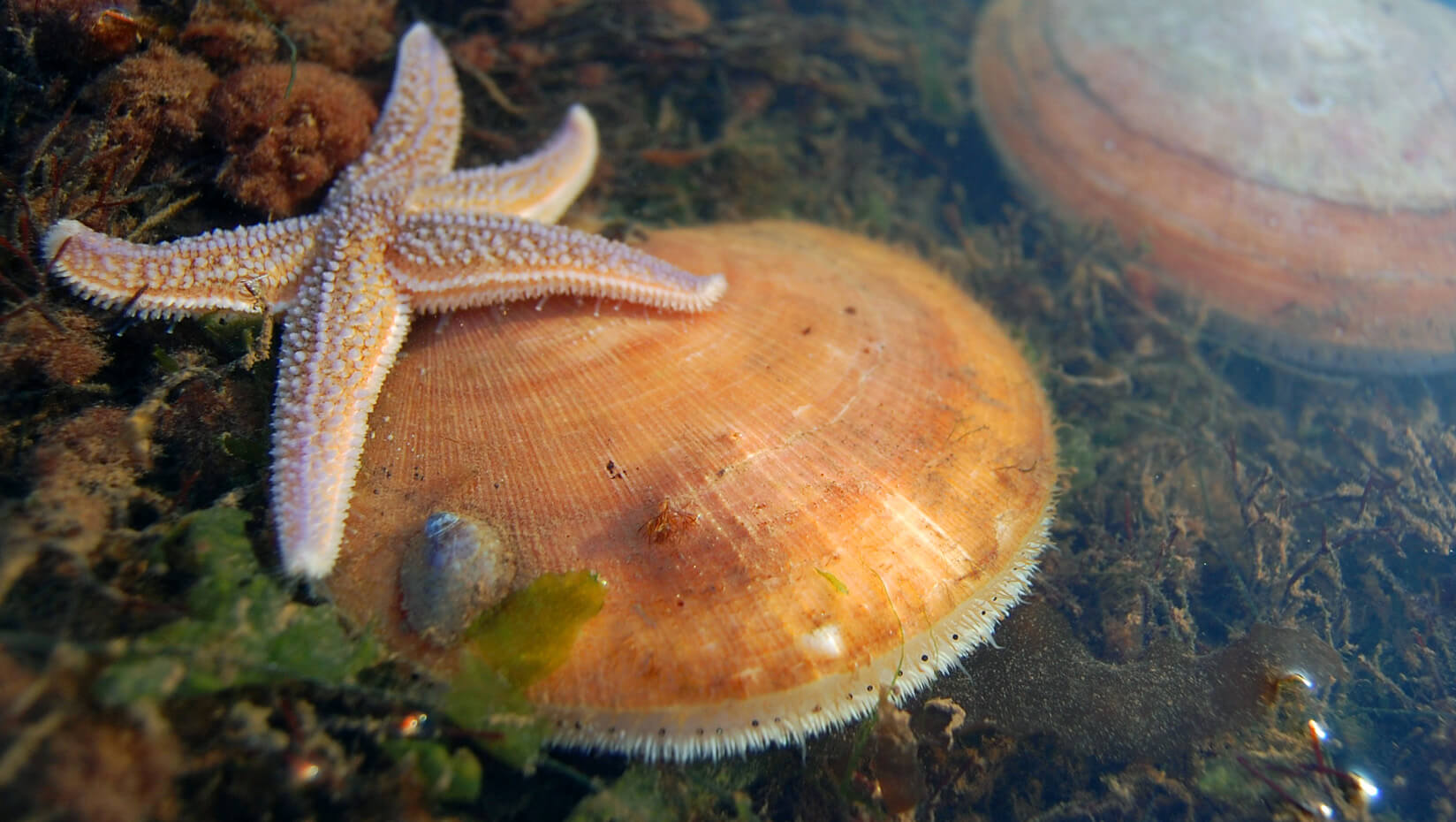
Reading the genetic signature of the sea scallop
Scallops are one of the most profitable fisheries in Maine, with a statewide value of nearly $7 million in 2016. The scallop fishery is also one of the most local, with small “day boats” staying close to shore.
Landings (and populations) have fluctuated over the years, with the latest peaks in the mid-1980s and 1990s. After severe declines in the early 2000s, the state instituted adaptive management, closing some areas and closely monitoring others. The approach seems to be successful, as landings have increased significantly, although the exact reasons are unclear and there are many questions left unanswered. Does closing a scallop bed protect spawning? How long does population recovery take? If a scallop bed is large, does that mean it’s healthy? Are all scallop beds equally productive?
Skylar Bayer, who graduated this spring from the University of Maine with a Ph.D. in marine biology, has been studying scallops for six years in Richard Wahle’s lab at the Darling Marine Center. Her research addresses questions about scallop reproduction. Scallops are broadcast spawners, releasing their eggs and sperm separately into the water. Fertilization happens by random encounters.
Bayer has learned what she knows about scallop spawning events from both laboratory and field experiments, manipulating the temperature to induce spawning, and weighing reproductive organs from scallops (the subject of her infamous Colbert Report appearance). Even under a microscope, however, it is difficult to distinguish the eggs, sperm, embryos and larvae of scallops from those of other bivalves. So, how can scientists understand how what happens in the open ocean?
These questions, combined with the availability and affordability of new analytical methods and Wahle’s encouragement, led Bayer into the expanding world of quantitative DNA detection and to the unexpected collaboration with Peter Countway, a microbial ecologist and senior research scientist at Bigelow Laboratory for Ocean Sciences in nearby East Boothbay. Countway studies the diversity and structure of microalgae, protozoa and bacteria — all microscopic organisms. Collaborating with Bayer on scallops was an opportunity to look at larger animals in the plankton (metazoans), such as scallop eggs, sperm and larvae.
“I typically throw out the DNA sequences from the larger stuff, the metazoans and macrofauna, but there could be really important information there,” he said. “Being able to detect the microbial stage of a metazoan suddenly gives us a window into this realm of spawning and settlement that was previously a black box.”
With financial support from Maine Sea Grant, the scientists began a project to detect spawning without having to collect, tag, track, tend, dissect or harvest scallops, as would be required by traditional approaches. “We’re not doing destructive sampling, dissections that kill the animal, and if the environmental sampling works out, we won’t have to collect animals and bring them into the lab,” said Bayer. Their first task was to sequence a selected region of scallop DNA, something that had not been done before. Then they developed a technique, using a method known as quantitative polymerase chain reaction, that uses three pieces of DNA that work together to locate and amplify scallop DNA against the backdrop of millions of other types of DNA in the environment.
Bayer and Countway next had to determine whether or not they could detect scallop DNA in a typical seawater sample. The natural abundance of scallop cells in the ocean might be too small for even the most sophisticated instrument to detect. The advantage of their newly designed test is its ability to amplify the amount of scallop DNA in a sample by several orders of magnitude, enabling detection via measurement of fluorescence. They successfully used the method to detect spawning scallops in the Darling Marine Center laboratory. They were awarded additional Sea Grant funds to try it in a real-world setting.
In August, Bayer and Countway hung nets filled with adult scallops off the dock at Bigelow Laboratory, and spent the next two months collecting water samples from the area around the scallops, to determine background levels of scallop cells and try to detect an increase in scallop genes coinciding with a natural spawning event.
Spawning events in coastal Maine often occur after water temperatures peak at the end of summer, in August or September. Spawning events can happen quickly and last less than an hour, so Bayer has had to collect many samples, and also dissect some of the scallops to confirm spawning activity and compare it to their water samples.
Over the next two months, Bayer and Countway will be extracting DNA from their samples to determine if they have captured any spawning events.
“Trying to capture spawning events in the field in real-time is risky and requires a lot of time and effort, but the payoff is worth it. If we can detect spawning events with this method, we could open a whole new door into understanding reproduction and population dynamics in marine animals,” said Bayer.
There is growing interest in environmental DNA or “e-DNA” techniques for assessing biodiversity, detecting the presence of invasive or toxic species, or studying migration patterns. The signatures of life are everywhere, revealing where animals have been and, in the case of spawning scallops, what they’ve been doing. Scientists no longer need to actually see or capture a species to know it is there.
The promise of e-DNA is the focus of a preliminary proposal led by David Emerson of Bigelow Laboratory, which was selected to be developed into a full Track 1 proposal to the National Science Foundation EPSCoR program in 2018. UMaine will be working closely with Bigelow and other marine research organizations in the state over the next year in this effort.
Contact: Catherine Schmitt, 207.581.1434
